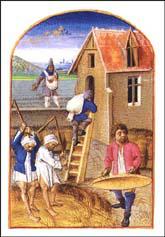William of Poitiers
William of Poitiers was born in Normandy in about 1030. After studying in Poitiers he served as a Norman knight. Later he became a priest and was eventually appointed as the Archdeacon of Lisieux. It was at this time that William became friends with William, Duke of Normandy.
When William became king of England in 1066 he invited William of Poitiers to become his personal chaplain. William's book, The History of William the Conqueror, was published in about 1073. Although William of Poitiers was in Lisieux during 1066, his book provides the most detailed description that we have of the Battle of Hastings.

Primary Sources
(1) William of Poitiers, The History of William the Conqueror (c. 1073)
Edward, king of the English, who had already established William as his heir and whom he loved as a brother or a son. To confirm his promise to William he sent to him Harold, of all his subjects the greatest in riches.
(2) William of Poitiers, The History of William the Conqueror (c. 1073)
There came a report, that King Edward was dead and his crown was worn by Harold. William as determined to avenge the wrong by arms. A large force of 50,000 volunteers were assembled, all confident in the justice of his cause.
(3) William of Poitiers, The Deeds of William, Duke of the Normans (c. 1071)
Duke William excelled both in bravery and soldier-craft. He dominated battles, checking his own men in flight, strengthening their spirit, and sharing their dangers.
William was a noble general, inspiring courage, sharing danger, more often commanding men to follow than urging them on from the rear. The enemy (at the Battle of Hastings) lost heart at the mere sight of this marvellous and terrible knight. Three horses were killed under him. Three times he leapt to his feet. Shields, helmets, hauberks were cut by his furious and flashing blade, while yet other attackers were clouted by his own shield.
